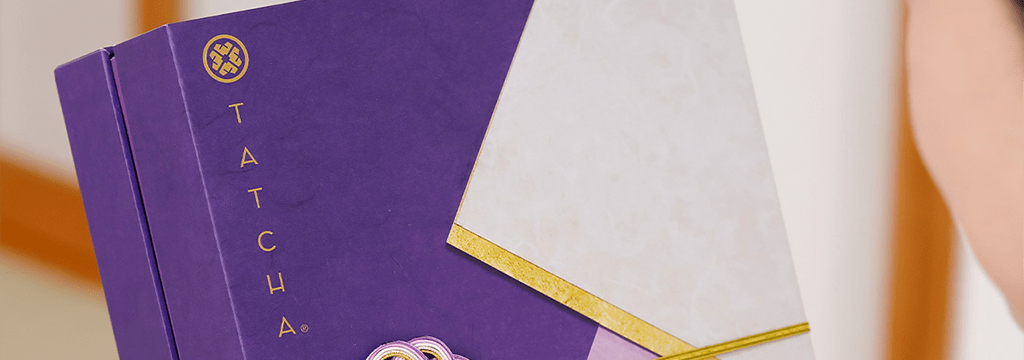At Tatcha, we are always looking for new ways to incorporate our roots into our holiday offerings. This year, we call back to our Japanese heritage with a beautiful finishing touch: a mizuhiki. These ornamental knots have many uses today from hair styles to earrings, but their traditional use has always been to seal gift wrapping and envelopes. To learn more about mizuhiki, we asked artist and instructor Anna Tanaka to tell us about its history, meaning, and more. Shop holiday sets adorned with mizuhiki here.
Please introduce yourself and tell us about what you do.
My name is Anna Tanaka, a mizuhiki artist and instructor. I usually teach classes on how to tie mizuhiki, and plan and create products tied with mizuhiki while selling them.
What is the origin of mizuhiki?
Mizuhiki is said to have started as far back as the Nara period (710-794). The earliest record of mizuhiki holds that gifts sent from China in the Nara period had hemp twine tied around them. I think that was impressive and symbolic to the Japanese. It spread within the court (among people of high rank), and as time went by, it spread to the general public, and that general spread was during the period of warfare and samurai culture. Therefore, the etiquette and manners of mizuhiki that continue to this day are based on the Ogasawara school of samurai etiquette that was born during that period.
Is there any symbolism behind mizuhiki?
Unlike in Western cultures, where ribbons are attached as decoration, mizuhiki carries a special sentiment. The most important meaning of mizuhiki is to make sure that it is unopened, that it is sacred until it reaches the recipient, and that no one has touched it, because the paper material of the mizuhiki itself is very traceable and shows that it was opened once, even if others open it.
The culture of taking the time to carefully wrap a gift and prove that it is sacred and not open to anyone until it reaches the recipient is, I believe, very Japanese, and this is connected to omotenashi (mindful hospitality practiced in Japan) and care for the recipient.
Describe your ritual of tying mizuhiki.
Carefully tying it slowly, one step at a time, with the recipient in mind, signifies that you care very much of the person to whom you are sending the gift, and greatly expresses your connection with that person. Although the recipient cannot see how I prepare the gifts, the act of carefully tying mizuhiki for someone while straightening myself up helps to set my mind at ease and expresses my feelings toward the recipient. I tie each item carefully, thinking that by looking at the wrapping, the recipient will be able to feel such feelings of mine.
What materials are mizuhiki made from?
The material of mizuhiki is originally a thin paper core with a beautiful shiny film wrapped around it, or gold-colored paper attached to it. So once it is folded, it cannot be refolded, and once it is curved, it cannot be un-curved. It is exactly the same as the nature of paper. It was originally made of Japanese washi paper, but now it is made of pulp.
What do you hope to convey through your work?
When creating art and knots, I place a great deal of importance on the Japanese four seasons, customs and events that have continued from long ago and that are close to the seasonalities. And I try to incorporate them into my creations. At the same time, through the beauty of the materials and the beauty of my creations, I hope that more people will come to appreciate mizuhiki and Japanese culture.

